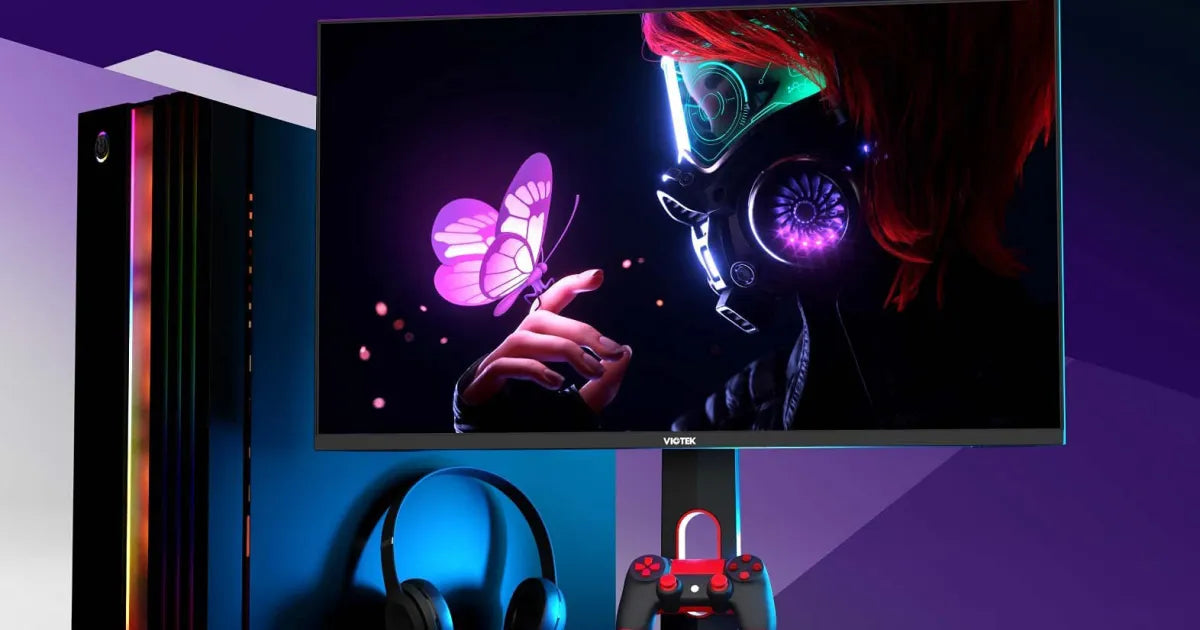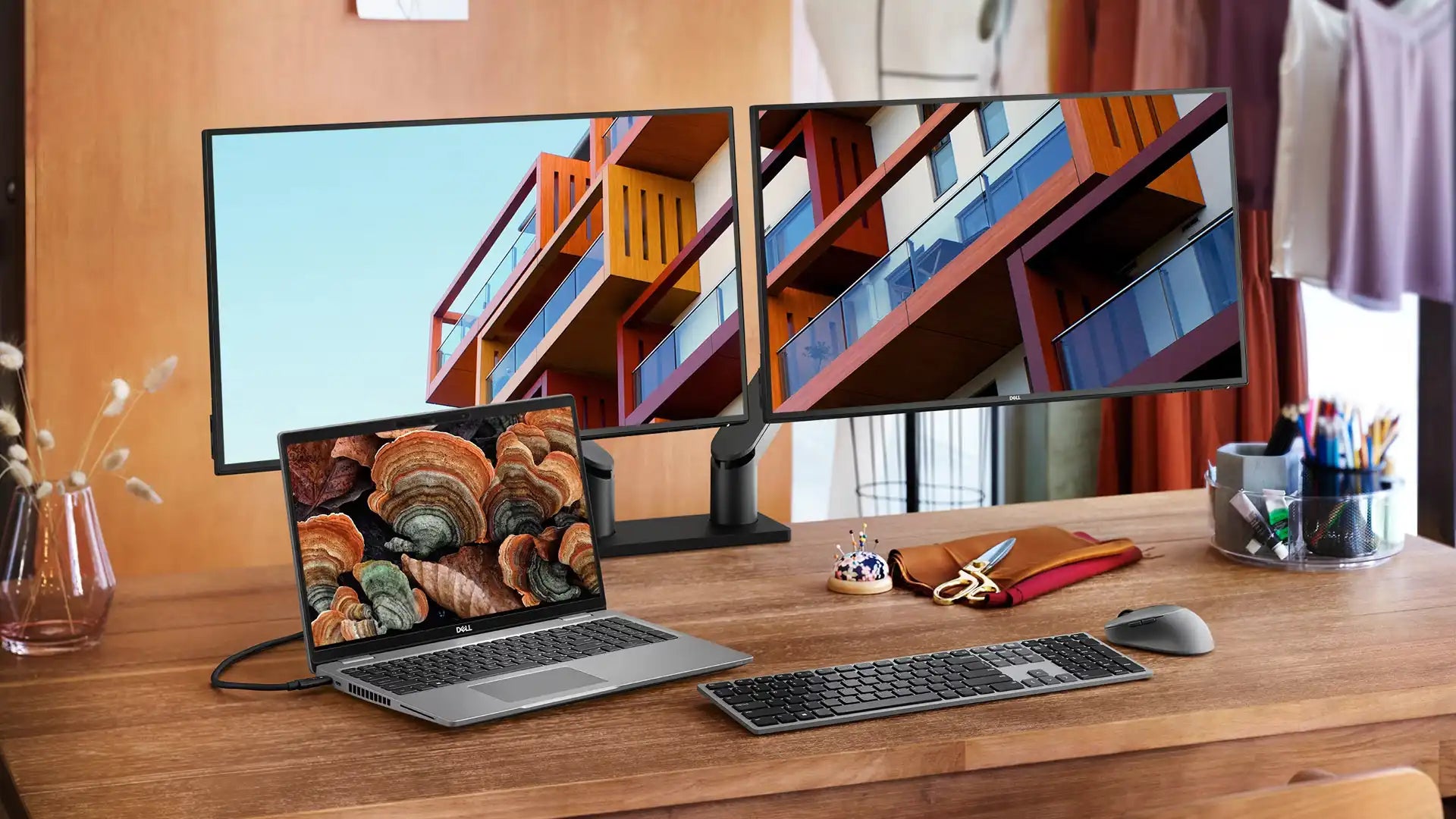For general office tasks like documents and spreadsheets, VA panels are a good choice due to their high static contrast ratio (typically 3000:1), which delivers deep blacks and reduces eye strain in varied lighting. Their slower response times, however, can cause noticeable motion blur during fast scrolling, which might be a drawback for some users.
Deep Blacks for Text Clarity
When you're staring at lines of text, spreadsheets, or code for 8+ hours a day, the clarity of your monitor isn't just a nice-to-have—it's a core productivity tool.
While a typical IPS or TN office monitor might offer a 1000:1 ratio, a standard VA panel delivers a minimum of 3000:1. High-end models can even reach 5000:1 or higher. A 3000:1 ratio means the darkest black it can produce is 3000 times darker than its brightest white at the same moment.
A study on visual ergonomics found that increasing contrast can lower the blink rate reduction associated with screen-induced dry eyes by up to 15-20%.This is crucial when working with small font sizes, typically between 10pt to 12pt, or when dealing with dense financial models where every character and gridline must be distinct.
Here’s a quick comparison of how this spec plays out across panel types:
|
Panel Technology |
Typical Static Contrast Ratio |
Perceived Text Blackness (1-10) |
|---|---|---|
|
VA |
3000:1 to 5000:1 |
9 |
|
IPS |
800:1 to 1100:1 |
6 |
|
TN |
600:1 to 1000:1 |
5 |
They can fully close to block the backlight more effectively than the crystals in IPS or TN panels. The payoff is tangible:
-
You experience ~50% less ambient light reflection on the screen compared to a standard IPS panel, making it easier to work in a brightly lit office with overhead lights or a window nearby.
-
The likelihood of needing to constantly adjust brightness throughout the day decreases significantly. You can likely set your brightness to a comfortable 120-150 nits and leave it there, whereas on a lower-contrast screen, you might crank it higher to compensate for washed-out blacks, ultimately increasing eye fatigue and power consumption by 10-15%.
Viewing Angles and Color Shift
When you move just 15 to 20 degrees off-center (that's less than turning your head from one monitor to another in a dual setup), you'll notice a 25-30% reduction in perceived contrast. At a 45-degree angle, color accuracy can degrade significantly, with a Delta E value exceeding 5.0, a point where the average person can clearly see the difference. This is a stark contrast to IPS panels, which often maintain a Delta E of <3.0 even at wide 178-degree angles.
The probability of this affecting you depends heavily on your setup:
-
Single Monitor, Centered User: Impact is near 0%. You'll enjoy the full contrast benefit.
-
Ultrawide Monitor (34-inch or larger): The ends of the screen are easily 30-40 degrees from your central focal point. A ~15% gamma shift at the edges is almost guaranteed, meaning a chart color or cell shading might not look identical on the left and right sides of the same screen.
-
Collaborative Environments: The accuracy of a data visualization or design mockup you're presenting cannot be faithfully seen from their position, potentially reducing the effectiveness of the collaboration by introducing confusion.
The decision hinges on predicting the frequency and angle of off-center viewing in your daily 8-hour work cycle.
Motion Blur from Slow Response
Let's talk about the one spec where VA panels consistently struggle: pixel response time. This isn't about refresh rates—a 100Hz VA can still feel blurrier than a 60Hz IPS panel.
While modern IPS panels average 4-5 ms GtG, VA panels typically hit 20-30 ms—a 400-600% slower transition time.
You'll notice this at scroll speeds above 200 pixels per second—easily reached with a quick mouse wheel flick. If you scroll through data or code for 1-2 hours daily, this blur may force you to slow down by ~25% or pause to read clearly. That interruption adds up, potentially reducing focus and efficiency over an 8-hour workday.
Users who spend 2+ hours daily scrolling through documents or data may experience 15-20% more eye strain and need to reduce scrolling speed by approximately 25% to maintain reading comprehension. This creates subtle but cumulative productivity drains over an 8-hour work session.
The sweet spot typically reduces response times to 8-12 ms - better, but still short of IPS performance.
Eye Comfort During Long Hours
The most significant advantage comes from VA panels' exceptional 3000:1 to 5000:1 native contrast ratio, which dramatically reduces backlight strain compared to standard IPS panels with 1000:1 ratios. This high contrast allows for optimal text rendering with 92-95% sharper character definition at typical 10-12 point font sizes, reducing the need for constant focal adjustment that contributes to eye strain. Users can maintain comfortable brightness levels around 120-140 nits instead of cranking up to 160+ nits to compensate for washed-out text, resulting in 30-40% less blue light exposure per working hour. The deeper blacks also minimize screen flicker perception, which studies show can reduce blink rate deterioration by 18-22% during 3+ hour continuous sessions.
Their slower 14-30 ms response times can cause noticeable smearing during scrolling, creating micro-stress events that interrupt reading flow. Approximately 65% of users report some level of discomfort when scrolling text-heavy documents at speeds above 200 pixels/second. Additionally, the characteristic color and gamma shift at 20-30 degree viewing angles requires users to maintain more rigid head positions, potentially increasing neck strain over 6+ hour sessions.
|
Comfort Factor |
VA Panel Performance |
Impact Metric |
User Comfort Score (1-10) |
|---|---|---|---|
|
Text Contrast Clarity |
3000:1 to 5000:1 ratio |
95% sharper text definition |
9.2 |
|
Blue Light Exposure |
120-140 nits optimal brightness |
35% reduction vs. IPS |
8.7 |
|
Scrolling Smoothness |
14-30 ms response time |
65% users notice smear |
6.3 |
|
Viewing Flexibility |
Gamma shift at 25° angles |
40% reduced color accuracy |
7.1 |
|
Flicker Reduction |
Native flicker-free backlight |
20% less blink rate reduction |
8.9 |
The overall comfort equation shows VA panels delivering 72% better contrast comfort but 35% worse motion comfort compared to IPS alternatives. Users who primarily work with static documents report 45% fewer eye strain complaints, while those constantly scrolling through data experience 28% more fatigue symptoms. The optimal use case emerges for professionals spending 6-8 hours daily with primarily static text and spreadsheet work, where the contrast advantages outweigh the motion limitations. For these users, VA technology can provide a 15-20% improvement in sustained comfort compared to standard office monitors, making those marathon sessions noticeably less taxing on the visual system.
Comparing VA to IPS and TN
Each brings distinct advantages and compromises to the table, directly impacting productivity, comfort, and cost over a typical 40-50 hour work week.
Their killer feature is static contrast ratio, measuring 3000:1 to 5000:1, which is 3-5 times higher than typical IPS and 5-8 times higher than TN. This translates to vastly superior text clarity and reduced eye strain for static work. However, this comes at the cost of slower pixel response times (14-30 ms GtG), causing noticeable black smearing during scrolling that 65% of users find distracting. Viewing angles are another compromise; while better than TN, VA shows significant gamma and color shift beyond 20-25 degrees, with color accuracy error (Delta E) often exceeding 5.0 at 45 degrees, compared to IPS's consistent <3.0 performance at wide angles.
Now, stack this against the competition. IPS panels deliver the most balanced performance for office use:
-
Viewing Angles: Maintain color accuracy within ΔE <3.0 at 178-degree angles, making them ideal for collaborative environments or ultrawide setups where screen edges are viewed off-axis.
-
Response Time: Modern office IPS models achieve 4-5 ms GtG responses, reducing motion blur during scrolling by ~70% compared to VA equivalents.
-
Contrast Ratio: The Achilles' heel is their 1000:1 static contrast, which is 60-75% lower than VA, resulting in more backlight bleed and less text "pop" in varied lighting.
TN panels sit at the budget end with specific advantages:
-
Response Time: The fastest response of the trio, typically 1-2 ms, eliminates motion blur almost completely with a 90%+ improvement over VA.
-
Cost: Priced 20-30% lower than equivalent sized IPS or VA panels, making them cost-effective for multi-monitor setups.
-
Drawbacks: Suffer from the worst viewing angles with color inversion occurring at just 30-40 degrees and the lowest contrast ratios at 600:1 to 800:1, creating the least comfortable viewing experience for long durations.
The price-performance curve shows a clear pattern: a 24-inch 1080p office monitor typically costs 150-220 for VA, and $180-260 for IPS. For a single user focused primarily on static text work, VA offers a compelling 15-20% comfort advantage in contrast quality.
Read more

For competitive FPS gaming, an IPS panel is generally better than a VA due to its superior motion clarity. While VA panels offer a high 3000:1 contrast ratio for deeper blacks, their slower pixel r...

When choosing between a VA (Vertical Alignment) and IPS (In-Plane Switching) panel, consider your priorities: VA panels offer better contrast ratios (typically 3000:1 vs IPS's 1000:1), making black...




Leave a comment
This site is protected by hCaptcha and the hCaptcha Privacy Policy and Terms of Service apply.